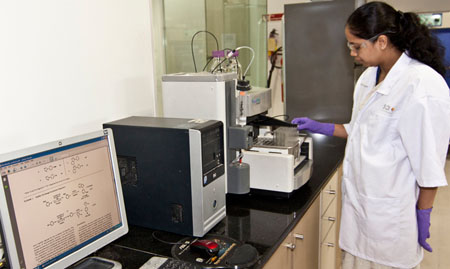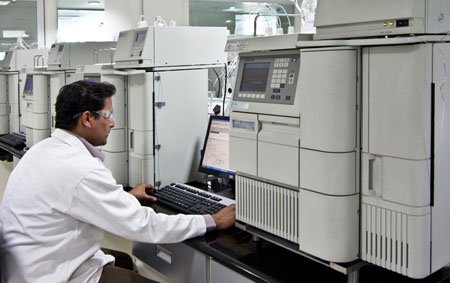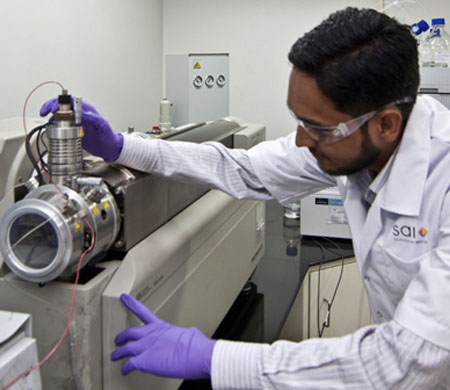The cost of drug discovery is a key issue for industry to address but price is not the only consideration when outsourcing such core activities. As Indian companies look to expand their offerings in discovery, Meredith Williams at Sai Life Sciences, argues that Indian CROs have evolved better to meet key customer needs.
The woes of the drug discovery sector have been extensively documented and discussed over recent years. With ever fewer New Drug Applications making headlines and soaring research and development costs, the industry has been forced to search out new strategies to improve the process.
With an accelerating shift of preclinical research away from the traditional Big Pharma setting, a large proportion of drug discovery is now taking place in small biotechs, virtual organisations and pseudo-academic institutes. The outsourcing of certain aspects, and in some cases the entire process, has become commonplace for today’s drug hunters. As the nature of the drug discovery process becomes more fragmented and involves a more complex network of relationships, Contract Research Organisations (CROs) are now playing a critical role.
Outsourced drug discovery services were estimated to be worth US$10.1bn in 2011 and this is predicted to increase to more than $16bn by 2014. In a recent survey carried out by Ernst & Young on behalf of Indian CRO Sai Life Sciences, it was estimated that 64% of discovery phase activities are now taking place externally.
While Western-based CROs have taken up much of the slack left by the traditional all-encompassing research organisations (a process partly made possible by the unfortunately high rate of redundancies experienced among scientists in recent years), the high costs can often erode much of the benefit that outsourcing is envisaged to provide. An emerging trend has been that successful Western-based CROs are focusing to a greater extent on high-tech niche services where the benefits of specialist input and the expense of the associated infrastructure necessitate the higher price tag. However, significant progress within the Asian CRO sector, coupled with squeezed budgets in the West, has opened up new opportunities in the East.
For some time now CROs in India and China have secured a firm foothold in the pharmaceutical sector for delivering large-scale chemistry services. Recent years have seen these organisations progressively extending their skill set and diversifying their product. A number of Indian CROs, such as Sai Life Sciences, have been quick to adapt. A broader set of drug discovery capabilities, integration across functional groups and improved communication among all stakeholders are fundamental to this process.
A traditional strength in synthetic chemistry developed into medicinal chemistry services, which has been further refined with units such as HTS and computation chemistry providing additional support
A key component of this evolution has been a broadening of the technical capabilities at the CRO. A traditional strength in synthetic chemistry on medium to large-scale developed into medicinal chemistry services. This has been further refined with units such as high throughput synthesis and computation chemistry providing additional support. In the same way as manufacture of intermediates and raw materials in India evolved into delivery of API, through growing trust and confidence in Indian CROs, so the outsourcing of medicinal chemistry has become run of the mill as one component used to resource research. Driving this process forward has been an evolving level of trust on the part of the research organisation in the West. Indian CROs offering medicinal chemistry have worked hard at implementing data security, HR structures and training programmes to minimise concerns about the safety of intellectual property.

The research unit in Pune brings together many of the capabilities needed to drive drug discovery projects
Similarly, expansion into non-chemistry services has been led by pharmacokinetics studies, which are very much process-driven activities and for which the data and reporting are easily evaluated by the customer. Multiple services providers in the East now deliver the full panel of in vitro ADME assays along with safety and toxicology studies. As confidence in Indian service providers has grown the natural progression has been also to outsource biology activities. While pharmacology requires a more expensive and complex infrastructure in terms of equipment, this is an investment that forward-thinking Indian CROs have felt able to make on the back of the other thriving sectors of their business – API manufacture, pharmacokinetics, formulation development.
With the broad range of drug discovery capabilities in place the CRO is offered the potential for integration to provide a one-stop shop for a discovery client. The synergy provided by working across multiple functional areas, the logistical gains of having compounds and experiments co-located and the added commitment that results within the service provider can, if delivered properly, provide an extremely effective drug discovery solution.
In many instances Asian CROs are co-driving fully integrated drug discovery projects for clients in the West who have limited or no internal resources
For example, in conjunction with Sai’s discovery unit seeing year-on-year growth in revenue, it is now also the case that just over 45% of its client base are accessing services from more than one department (medicinal chemistry, scale-up, DMPK, toxicology, biology). In many instances Asian CROs are co-driving fully integrated drug discovery projects for clients in the West who have limited or no internal resources.
The model of having a multidisciplinary core team, which has until now been associated with traditional in-house research, has been emerging within the CRO sector. These project teams have needed to make the shift from simply following directives to taking on a degree of project ownership. Reporting structures have had to adapt to accommodate a more complex matrix of relationships between functional units, business development and the client so as to benefit the project.

CROs in India and China have secured a firm foothold in the pharmaceutical sector for delivering large-scale chemistry services
Sai Life Sciences’ research unit in Pune brings together many of the capabilities needed to drive drug discovery projects. The medicinal chemistry, DMPK, toxicology, formulation development and biology departments work jointly on a range of projects for clients located around the globe. Flexibility is essential for this strategy to function, since every client requires a slightly different mix of services depending on the phase of their project and the extent of their internal resources. While the cross-selling of services has obvious benefits for the CRO, the biotech client also gains through having a range of experiments and studies co-located. With this flexible model at its core, the discovery outsourcing model is able to overcome many of the entrenched issues associated with internal resourcing. The client is free to shop around and select services from the most appropriate provider, while the CRO is motivated continually to provide positive results in return for customer loyalty.
By way of illustration, one of the projects Sai Pune is currently involved with is for a US-based start-up. With some chemical starting points already available Sai has put in place a six-person medicinal chemistry team with computational and informatics support. A 2–3 full time equivalent (FTE) biology team helps triage new compounds using a set of biochemical and cellular assays. On-site ADME and PK support allows further evaluation of promising leads in a fast and efficient manner. A project core team in Pune, represented by individuals from each functional team, co-ordinates activities in the labs while a programme manager based in the US has ultimate responsibility for the way the project is run at Sai and has direct communication with the biotech company. Being located close to the client, much of this dialogue can happen in real time and face to face, thereby facilitating the type of brainstorming and flexibility required in a dynamic lead optimisation programme.
It will come as no surprise that, at a time when biotech entrepreneurs in the West are facing investment challenges, CROs are also beginning to explore the potential of sharing the risks on promising drug discovery projects.
It will come as no surprise that, at a time when biotech entrepreneurs in the West are facing investment challenges, CROs are also beginning to explore the potential of sharing the risks on promising drug discovery projects
Although skilled scientists and a functional infrastructure are clearly critical, the cornerstone of successful outsourcing needs to be communication. Those in a global working environment and infrastructure have become comfortable with new tools for interacting at a distance. Exchanges between scientists are facilitated through tele- and video-conferences, transfer of documentation via secure e-rooms and use of a range of project management documents, Gantt charts and databases. CROs are continually exploring more efficient communication interfaces, – smart phone apps and secure on-line blogs – to keep project team members around the world updated on the latest data and conclusions. As the technical complexity of the work increases so the difficulties of communicating between continents, time-zones and cultures are magnified. Staggered work hours allow for efficient dialogue with customers in a range of time zones. Work shifts, more usual in a manufacturing environment, are now being adopted in discovery support groups such as analytical and purification teams. While the logistics of shipping material between countries can be time-consuming, having a dedicated support team for tracking shipments and liaising with customs and courier counterparts streamlines the process.
With the shift to projects requiring creative input and greater problem solving, Sai has found it critical also to place particular emphasis on in-house training. Moving away from a traditional hierarchical Indian decision-making structure has required careful coaching and mentoring of the mid-level scientists who are now communicating directly with their Western-based counterparts on a daily basis. Confidence and empowerment are the themes that ultimately allow for solid scientific relationships to be built.

Indian CROs have made significant investment in expensive and complex infrastructure
Many Asian CROs have been actively boosting the level of drug discovery experience within their teams. In many cases returning Indian expats, pushed by the depressed career opportunities in the West and pulled by a booming economy and developing society back home, are taking up new positions running functional teams of scientists and applying the research skills they learned in the pharma/biotech sector in the West. Recently service providers have been recruiting scientists with an extensive drug discovery background to act as project managers and help cement the cross disciplinary integration needed. The CRO is no longer simply providing isolated services needed during a research project but is actively acting as a stakeholder in a given project’s success by being creative and providing solutions. In some cases these project managers are based in the US or Europe so as to allow continuous contact with their counterparts at the research organisation. While this clearly also allows them to take up some of the overlapping responsibilities for business development within their region there is also an obvious benefit in terms of bridging the gap between the research company and the team of scientists in the CRO: between project owner and solution provider.
In today’s challenging funding environment the correct choice of outsourcing partner is often the key to translating an exciting discovery opportunity into tomorrow’s therapy for the patient.




